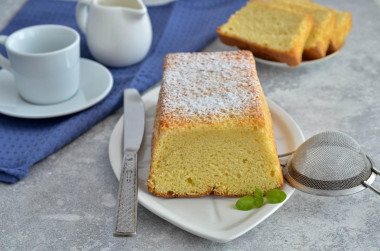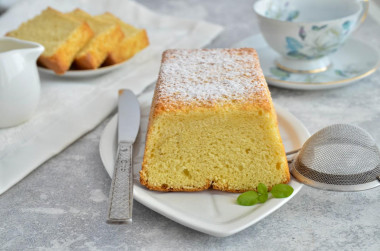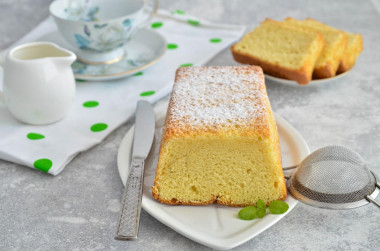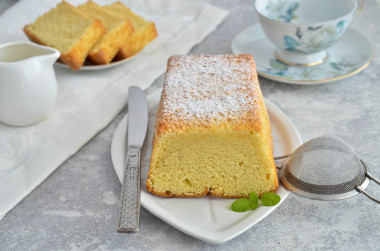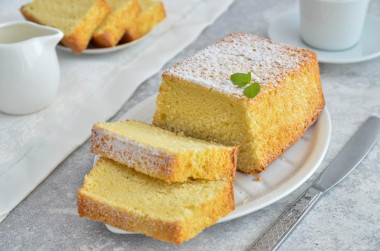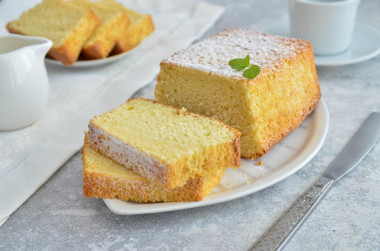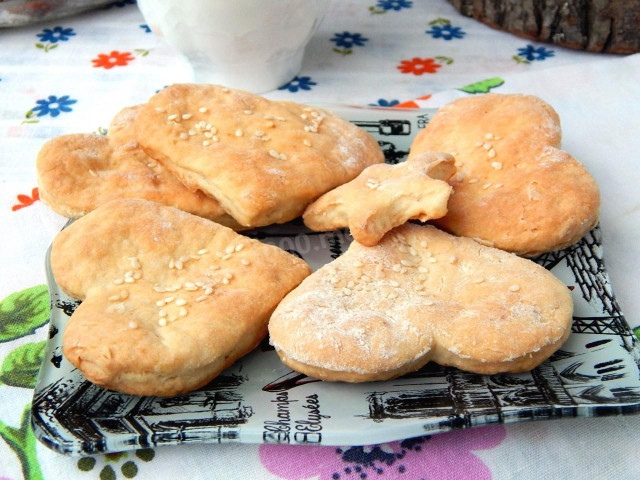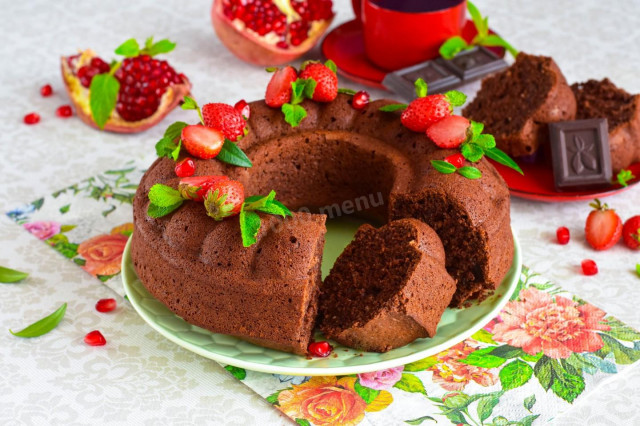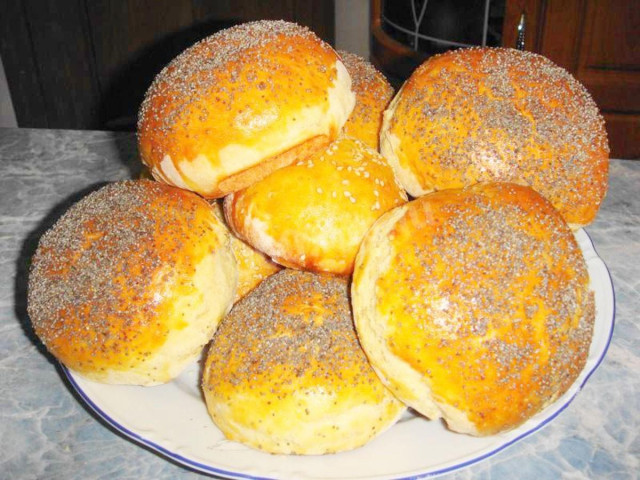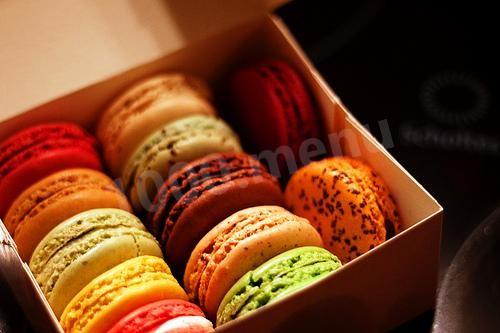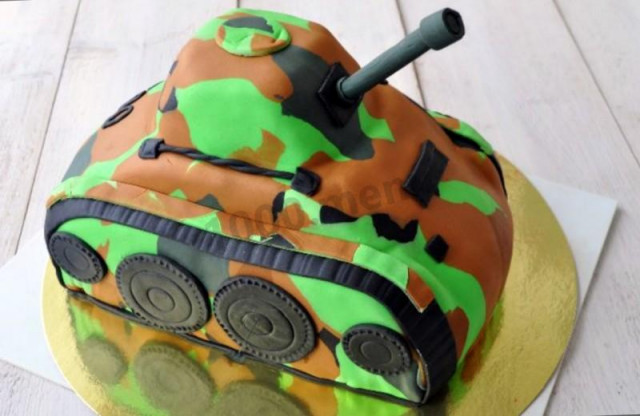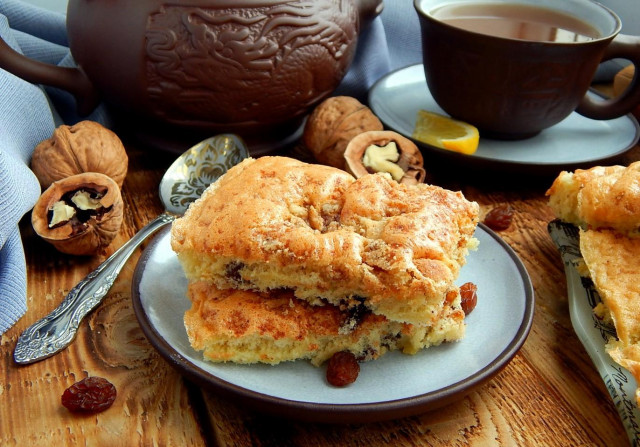Composition / ingredients
Step-by-step cooking
Step 1:

Prepare the products for making the cupcake. For this recipe, accurate gramming is important, so it is better to weigh all the ingredients on the kitchen scales. Another secret of a successful cupcake is products of the same temperature, room temperature. Therefore, take out the eggs and milk in advance. The butter will be melted, so it is not necessary to take it out. Instead of baking powder, you can take soda in the same amount.
Step 2:

Put the butter in a saucepan with a thick bottom and put it on a small fire. The thick bottom of the dishes will not allow the oil to melt and burn quickly. If there are no suitable dishes, then melt the butter in a water bath. Or use the microwave. The main condition is that the oil should not boil, only melt. Otherwise, the serum will separate from it. Cool the melted butter to room temperature, and only then use it.
Step 3:
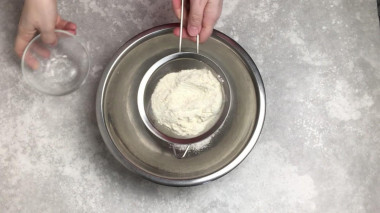
Sift the flour. Sifting saturates the flour with air, which makes baking softer and more airy. In addition, sifting allows you to separate small debris that may be present in the flour.
Step 4:

Add baking powder and salt to the flour, mix. Mixing dry ingredients gives them an even distribution over the entire mass.
Step 5:
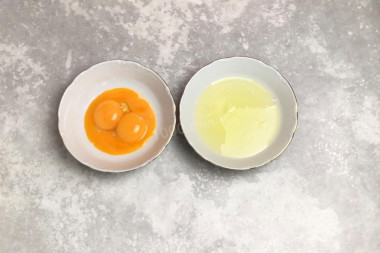
Divide the eggs into whites and yolks. Do this as carefully as possible so that the yolk does not get into the protein. The presence of excess impurities will not allow the proteins to beat well, so even the dishes should be absolutely clean.
Step 6:

Start whipping the whites with a mixer. This process is quite long, so it is better not to do it manually. Without stopping whipping, add sugar to the protein mass. Pour it in slowly, in a thin trickle. Beat the whites to a fluffy white mass. The beaters of the mixer should leave a clear mark on them.
Step 7:
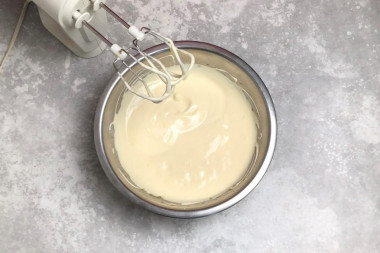
Without turning off the mixer, add egg yolks to the protein mass. When they are completely mixed, stop whipping.
Step 8:
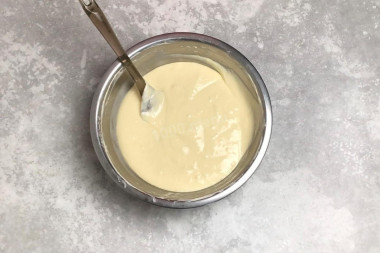
Add dry ingredients to the beaten eggs, pour in milk and melted cooled butter. Gently mix the mass with a spatula. For this purpose, it is better to take a silicone spatula. It does not injure the structure of the whipped products, and the baking will not settle in the future. Stir with movements from the bottom up, as if burying the introduced products.
Step 9:

Prepare the cake pan. I have a silicone mold measuring 20*7 cm. If it's silicone, then you don't need to do anything. If there is another material, then lubricate the mold with a small piece of butter. Or line it with baking paper. Pour the dough into the mold. Level the top with a spatula.
Step 10:
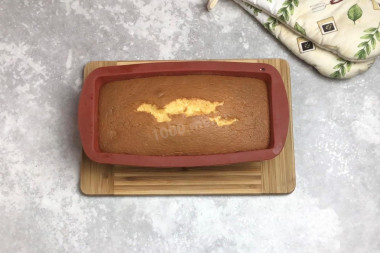
Bake the cupcake in an oven preheated to 180 ° C, top-bottom mode. Do not open the oven door during the process, so that the cupcake does not fall off. The baking time depends on your oven and the form in which the cupcake will be baked. It varies from 25 to 40 minutes. Look at the appearance of the cupcake. Mine was baked for 30 minutes. Readiness can also be determined with a wooden stick. It is necessary to pierce the finished cupcake with it. If the stick comes out dry, without pieces of wet dough, the cupcake is ready.
A very successful recipe! The cupcake really turns out to be wet inside. I think it's a great base for cakes if you bake it in a round shape. But just like that, without additives and creams, it's delicious!
--------------------
Articles to help:
How to cook delicious in the oven according to someone else's recipes
Wheat flour. Secrets and nuances of use
Caloric content of the products possible in the composition of the dish
- Whole cow's milk - 68 kcal/100g
- Milk 3.5% fat content - 64 kcal/100g
- Milk 3.2% fat content - 60 kcal/100g
- Milk 1.5% fat content - 47 kcal/100g
- Concentrated milk 7.5% fat content - 140 kcal/100g
- Milk 2.5% fat content - 54 kcal/100g
- Chicken egg - 157 kcal/100g
- Egg white - 45 kcal/100g
- Egg powder - 542 kcal/100g
- Egg yolk - 352 kcal/100g
- Ostrich egg - 118 kcal/100g
- Whole durum wheat flour fortified - 333 kcal/100g
- Whole durum wheat flour, universal - 364 kcal/100g
- Flour krupchatka - 348 kcal/100g
- Flour - 325 kcal/100g
- Granulated sugar - 398 kcal/100g
- Sugar - 398 kcal/100g
- Butter 82% - 734 kcal/100g
- Amateur unsalted butter - 709 kcal/100g
- Unsalted peasant butter - 661 kcal/100g
- Peasant salted butter - 652 kcal/100g
- Melted butter - 869 kcal/100g
- Salt - 0 kcal/100g
- Baking powder - 79 kcal/100g


